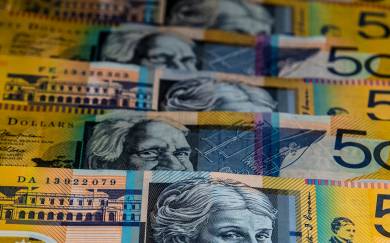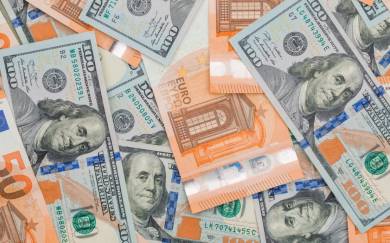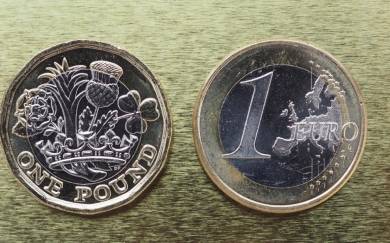ECB interest rate decision, German GDP and other important economic events of the following week commented by InstaForex (part II)

InstaForex Analysis 23.10.2022 20:16
Read the first part here: The release of Chinese GDP, Bank of Canada interest rate decision and more - InstaForex talks the following week (part I)| FXMAG.COM
Thursday 27 October
Eurozone. The European Central Bank's decision on the rates (main and deposit). ECB Monetary Policy Statement
The consequences of Brexit and the coronavirus pandemic, due to which European countries were forced to impose strict quarantine restrictions that negatively affected economic activity, trade conflicts, factors of political instability in Europe are the main threats to the European economy. A new factor of instability in Europe is the military conflict in Ukraine, where Russia is conducting a special military operation. According to ECB economists, this military conflict can reduce the eurozone's GDP by 0.3%-0.4%, and in the worst-case scenario, GDP will decrease by almost 1%. However, some of the economists believe that these are modest forecasts. The situation could be much more serious.
Amid the Russian-Ukrainian military conflict, which provoked a sharp increase in energy and food prices, inflation in Europe has accelerated sharply, and economists expect it to grow further in the coming months, as energy prices continue to rise, while the European Union imposes new restrictions on the Russian economy. The consumer price index (CPI) for the eurozone rose by +8.1% in May (in annual terms), which was higher than the forecast for growth of +7.7% and the previous value of +7.4%.
In June, consumer price growth accelerated to +8.6% (in annual terms), and in September to +9.9%.
Thus, inflation in the eurozone is accelerating, updating record highs and forcing ECB leaders to accelerate decision-making to curb it.
The focus of the EU's foreign economic policy on the refusal of Russian energy carriers, combined with high inflation and problems in supply chains, will provoke a recession in the eurozone, economists say. And now the ECB is in a difficult situation: to curb accelerating inflation without harming the recovery of the European economy.
And yet, according to ECB President Christine Lagarde, the central bank may raise its key interest rate again in order to reduce the risks of record high inflation rates and ease growing concerns about the weakness of the euro. It is expected that following the results of this meeting, the key interest rate and the ECB deposit rate for commercial banks will be raised by 0.5%.
But there are other forecasts both in one direction and in the other, or, for example, that interest rates will be increased by 0.25% or 0.75%.
It is also necessary to be prepared for an interest rate increase at the next ECB meetings. Perhaps this will also be mentioned in the accompanying statements of the ECB leaders.
The level of influence on the markets is high.
USA. Orders for Durable Goods. Orders for Capital Goods (excluding defense and aviation). Annual GDP for the 3rd quarter (preliminary estimate). The Main Index of Personal Consumption Expenditures (PCE price index). Applications for Unemployment Benefits
Durable goods are defined as solid products with an expected service life of more than three years, such as cars, computers, household appliances, airplanes and imply large investments in their production.
This leading indicator determines the change in the total value of new orders for the supply of durable goods placed with manufacturers. Growing orders for the supply of this category of goods signal that manufacturers will increase their activity as orders are fulfilled.
Capital goods are durable goods used for the production of durable goods and services. Goods produced in the defense and aviation sectors of the American economy are not included in this indicator.
A high result strengthens the USD, a decrease in the indicator has a negative effect on the USD. Data worse than the previous value and/or forecast will also have a negative impact on dollar quotes, while data better than the forecast will have a positive impact on the dollar.
Previous values of the "durable goods orders" indicator: -0.2% in August, -0.1% in July, +2.2% in June, +0.8% in May, +0.4% in April, +0.6% in March, -1.7% in February, +1.6% in January.
Previous values of the indicator "orders for capital goods excluding defense and aviation": +1.3% in August, +0.3% in July, +0.9% in June, +0.6% in May, +0.3% in April, +1.1% in March, -0.3% in February, +1.3% in January.
The level of influence on the markets is high.
This indicator (GDP) is the main indicator of the state of the American economy, and along with data on the labor market and inflation, GDP data are key for the country's central bank in determining the parameters of its monetary policy.
A strong result strengthens the US dollar; a weak GDP report negatively affects the US dollar.
There are three versions of GDP released at monthly intervals - Preliminary, Updated and Final. The pre-release is the earliest and has the greatest impact on the market. The final release has less impact, especially if it coincides with the forecast.
Previous values of the indicator (in annual terms): -0.6%, -1.6%, +6.9%, +2.3%, +6.7%, +6.3% ( in the 1st quarter of 2021).
Forecast for the 3rd quarter of 2022 (preliminary): +2.0%.
The level of influence on the markets is high.
The Core Personal Consumption Expenditure Index (or Core PCE Price Index, Core PCE) is a core measure of inflation that Federal Reserve FOMC officials use as the primary indicator of inflation.
The rate of inflation (apart from the state of the labor market and GDP) is important to the Fed in setting the parameters of its monetary policy. Rising prices put pressure on the central bank to tighten its policies and raise interest rates.
Higher-than-expected price index (PCE) readings could push the US dollar higher as it hints at a possible hawkish shift in the Fed's forecasts, and vice versa.
Previous values: +4.7% (Q2 2022), +5.2% (Q1 2022), 5.0% (Q4 2021), +4.6% (Q3), +6.1% (Q2), +2.7% (Q1 2021).
The level of influence on the markets is medium to high.
At the same time, the US Department of Labor will publish a weekly report on the state of the US labor market with data on the number of primary and secondary claims for unemployment benefits. The state of the labor market (together with data on GDP and inflation) is a key indicator for the Fed in determining the parameters of its monetary policy.
The result is higher than expected and the growth of the indicator indicates the weakness of the labor market, which negatively affects the US dollar. The drop in the indicator and its low value is a sign of the recovery of the labor market and may have a short-term positive impact on the USD.
Initial and re-claims are expected to remain at pre-coronavirus lows, which is also positive for the dollar, indicating the stability of the US labor market.
Previous (weekly) figures for initial jobless claims: 214,000, 219,000, 190,000, 209,000, 208,000, 218,000, 228,000, 237,000, 245,000 , 252,000, 248,000, 254,000, 261,000, 244,000, 235,000, 231,000, 232,000, 202,000, 211,000
Previous (weekly) values for repeated claims for unemployment benefits: 1,385,000, 1,361,000, 1,346,000, 1,376,000, 1,401,000, 1,401,000, 1,437,000, 1,412,000, 1,434,000, 1,430,000, 1,420,000, 1,368,000, 1,384,000, 1,333,000, 1,372,000, 1,324,000, 1,331,000, 1,309,000, 1,309,000
The level of influence on the markets is average.
Eurozone. ECB press conference
During the press conference, ECB President Christine Lagarde will explain the central bank's decision on rates and likely outline the prospects for the central bank's monetary policy in the coming months. Recently, the leadership of the ECB has been increasingly signaling the need for further tightening of monetary policy, which remains one of the softest (together with the BOJ and the Swiss National Bank) among the world's largest central banks.
If Lagarde again gives hawkish signals, then the euro may strengthen sharply. The soft tone of her statements will have a negative impact on the euro.
The level of influence on the markets is high.
Friday 28 October
Japan. BOJ Interest Rate Decision. BOJ Press Conference and Commentary on Monetary Policy
The level of interest rates is the most important factor in assessing the value of a currency. Most other economic indicators are only looked at by investors to predict how rates will move in the future.
The BOJ is pursuing an extra-soft monetary policy, keeping the main interest rate in negative territory. Most likely, the rate will remain at the same level of -0.1%. At the time of the announcement of the interest rate decision, volatility in the quotes of the yen and in the Asian financial market could rise sharply if the BOJ makes an unexpected decision.
During the press conference, BOJ Governor Haruhiko Kuroda will comment on the central bank's monetary policy. As Kuroda has repeatedly stated earlier, "it is appropriate for Japan to patiently continue the current loose monetary policy."
The level of influence on the markets is high.
Japan. BOJ Press Conference
During the press conference, the head of the BOJ Kuroda will give comments on the bank's monetary policy. Markets usually react noticeably to Kuroda's speeches, especially if he touches on the topic of monetary policy. If he does not touch on this issue, then the reaction to his speech will be weak.
The level of influence on the markets is high.
Germany. GDP for the 3rd quarter (preliminary release)
The German Statistical Office will publish a report with preliminary data on the country's GDP for the 3rd quarter. There are two versions of the quarterly GDP, published at intervals of about 10 days, - Preliminary and Final (final release). The pre-release is the earliest and therefore tends to have the greatest impact on the markets. This report reflects the overall economic performance of Germany, whose economy is the locomotive of the entire European economy, and has a significant impact on the ECB's monetary policy decision.
GDP growth means an improvement in economic conditions, which makes it possible (with a corresponding increase in inflation) to tighten monetary policy, which, in turn, usually has a positive effect on the quotes of the national currency.
The release of this report usually causes an increase in volatility in EUR quotes. It is likely that the report with preliminary data on German GDP for the 3rd quarter will come out with positive indicators. Data worse than the forecast/previous values will negatively affect EUR quotes.
Previous values: +0.1%, +0.6%, +0.3%, +2.2%, +2.2%, -0.1% ( in the 1st quarter of 2021).
Forecast for the 3rd quarter of 2022: +0.4%.
The level of influence on the markets is from medium to high.
Germany. Harmonized Consumer Price Index HICP (preliminary release)
Consumer prices account for most of the overall inflation. In normal economic conditions, rising prices force the country's central bank to raise interest rates to avoid excessive inflation (above the target level of the central bank). One of the dangerous periods of the economy is stagflation. This is rising inflation with a slowing economy. In this situation, the central bank should act very carefully so as not to harm the recovery of economic growth.
The index (CPI) is published by the EU Statistics Office, is an indicator for assessing inflation and is used by the ECB Governing Council to assess the level of price stability. Usually, a positive result strengthens the EUR, a negative one weakens it.
The growth of the indicator is a positive factor for the national currency (under normal conditions). Data worse than the previous value and/or forecast will have a negative impact on the euro.
Previous indicator values: +10.9% in September, +8.8% in August, +8.5% in July, +8.2% in June, +8.7% in May, +7.8% in April, +7.6% in March, +5.5% in February, +5.1% in January 2022 (in annual terms).
Forecast for October: +11.5% (preliminary estimate).
The level of influence on the markets is from medium to high.
USA. Personal consumption expenditures (Basic PCE Price Index)
The annual core PCE price Index (excluding volatile food and energy prices) is the main inflation indicator that Fed FOMC officials use as the main inflation indicator.
The level of inflation (in addition to the state of the labor market and GDP) is important for the Fed in determining the parameters of its monetary policy. Rising prices put pressure on the central bank to tighten its policy and raise interest rates.
The values of the base price index (PCE) exceeding the forecast may push the US dollar up, as this will hint at a possible hawkish shift in the Fed's forecasts, and vice versa.
Previous values: +4.9% (in annual terms), +4.7%, +4.8%, +4.7%, +4.9%, +5.2%, +5.3%, +5.2% ( in January 2022).
The level of influence on the markets is from medium to high.
Canada. GDP
Statistics Canada is to publish its monthly GDP report, which is the broadest measure of economic activity and a major indicator of the health of the economy. High GDP figures will have a positive impact on the CAD quotes, and, conversely, a weak GDP report will have a negative impact on the CAD.
Despite a possible relative decline, the data suggests that the Canadian economy continues to recover after its strong fall in early 2020 due to the coronavirus pandemic (in the 1st quarter of 2020, Canada's GDP fell by -8.6%, and in the 2nd - by -44.2%). Better-than-expected data will also have a positive impact on CAD.
Previous values: +0.1%, +0.1%, 0%, +0.3%, +0.7%, +0.9%, +0.2% (in January 2022).
The level of influence on the markets is from low to medium.
USA. University of Michigan Consumer Confidence Index (final release)
This index is a leading indicator of consumer spending, which accounts for the majority of overall economic activity. It also reflects the confidence of American consumers in the economic development of the country. A high level indicates growth in the economy, while a low level indicates stagnation. Data worse than previous values and/or forecast may have a negative impact on the dollar in the short term. The growth of the indicator will strengthen the USD.
Previous indicator values: 58.6, 58.2, 51.5, 50.0, 58.4, 65.2, 59.4, 62.8, 67.2 in January 2022.
The preliminary score was: 59.8.
The level of influence on the markets (final release) is medium.
Relevance up to 12:00 2022-10-26 UTC+2 Company does not offer investment advice and the analysis performed does not guarantee results. The market analysis posted here is meant to increase your awareness, but not to give instructions to make a trade.
Read more: https://www.instaforex.eu/forex_analysis/324977



 Conotoxia Comments 15.04.2022 14:51
Conotoxia Comments 15.04.2022 14:51
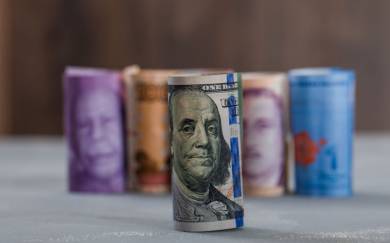
 Jeffrey Halley 06.05.2022 10:25
Jeffrey Halley 06.05.2022 10:25

 Kenny Fisher 09.05.2022 12:54
Kenny Fisher 09.05.2022 12:54




 Saxo Bank 17.05.2022 11:09
Saxo Bank 17.05.2022 11:09







 ING Economics 19.05.2022 09:56
ING Economics 19.05.2022 09:56

















 OneRoyal Market Updates 30.05.2022 10:14
OneRoyal Market Updates 30.05.2022 10:14







 InstaForex Analysis 06.06.2022 16:11
InstaForex Analysis 06.06.2022 16:11



















































 Matthew Ryan 23.08.2022 11:21
Matthew Ryan 23.08.2022 11:21















 Craig Erlam 25.08.2022 16:30
Craig Erlam 25.08.2022 16:30









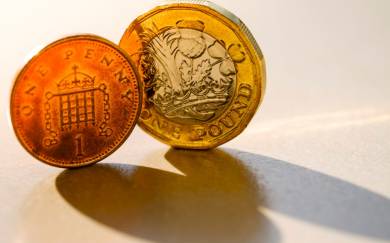













 Alexander Boltyan 06.09.2022 14:21
Alexander Boltyan 06.09.2022 14:21










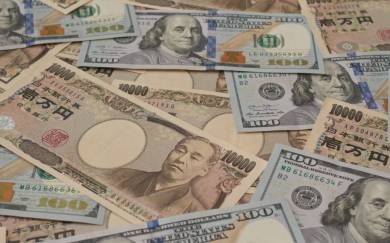

 Ed Moya 11.09.2022 09:18
Ed Moya 11.09.2022 09:18










 TeleTrade Comments 14.09.2022 12:43
TeleTrade Comments 14.09.2022 12:43
























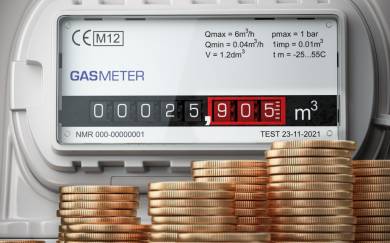





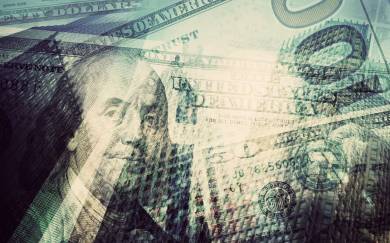

























 Kamila Szypuła 07.10.2022 10:32
Kamila Szypuła 07.10.2022 10:32





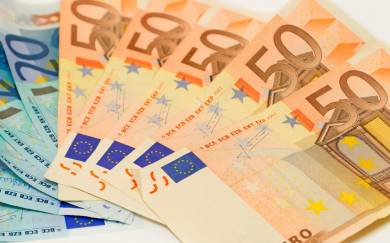










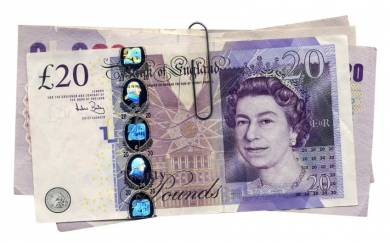















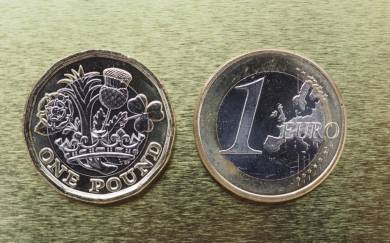



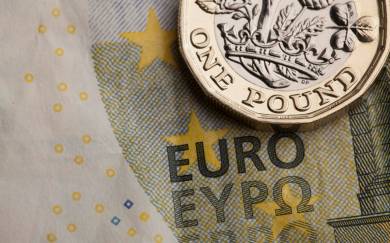















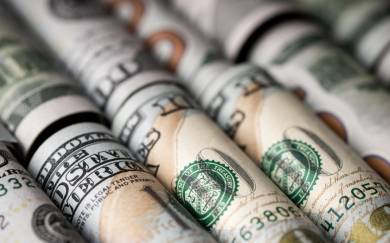





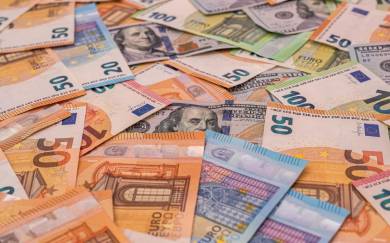





 Enrique Díaz-Álvarez 28.11.2022 15:30
Enrique Díaz-Álvarez 28.11.2022 15:30


 Steen Jakobsen 29.11.2022 15:07
Steen Jakobsen 29.11.2022 15:07

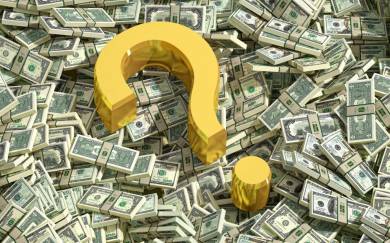














 Ipek Ozkardeskaya 12.12.2022 13:24
Ipek Ozkardeskaya 12.12.2022 13:24


 Intertrader Market News 13.12.2022 10:42
Intertrader Market News 13.12.2022 10:42
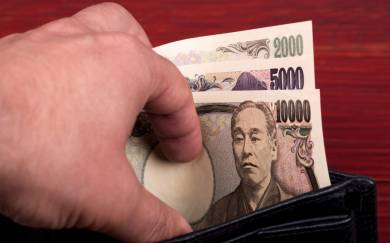
 Paolo Greco 14.12.2022 08:00
Paolo Greco 14.12.2022 08:00









 Peter Jacimovic 27.12.2022 09:32
Peter Jacimovic 27.12.2022 09:32
 Oscar Ton 28.12.2022 08:11
Oscar Ton 28.12.2022 08:11
 Jakub Novak 28.12.2022 09:14
Jakub Novak 28.12.2022 09:14
 Ralph Shedler 28.12.2022 14:00
Ralph Shedler 28.12.2022 14:00

 Torben Melsted 30.12.2022 08:29
Torben Melsted 30.12.2022 08:29












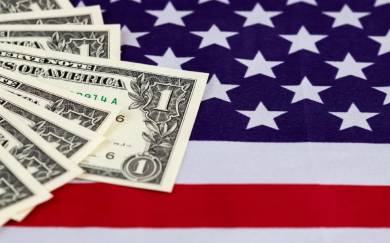



 Michael Hewson 18.01.2023 11:34
Michael Hewson 18.01.2023 11:34









